I get asked this question a lot. How do we know there is even a difference between organic and conventional produce? Unfortunately, we can’t tell by looking at fruits and vegetables if pesticides and herbicides have been used on them. We also can’t see the quality of the soil they were grown in or if they’ve been sprayed with chemicals to give them a longer shelf life. Which got me wondering if there was a way to actually “see” a difference between non-organic and organic produce? Hence, my potato experiment!
In order to understand the difference between organic and conventional farming let’s first look at the definition of both and what is allowed and not allowed in both types of farming. What does being organically grown mean? By definition, organic food or farming practices produce food without the use of chemical fertilizers, pesticides, or artificial agents. According to the USDA website, in order to label produce organic it must be grown without genetic engineering, ionizing radiation, or sewage sludge. I don’t know about you but I would definitely prefer the fruits and vegetables I eat to not be grown in sewage sludge or any of these things!
Conventional farming, according to the USDA definition, is “the use of seeds that have been genetically altered using a variety of traditional breeding methods, excluding biotechnology, and are not certified as organic”. Conventional farming relies on synthetic pesticides, herbicides, and chemical fertilizers to produce crops. These crops are genetically altered aka genetically modified organism (GMO). These GMO plants typically produce more pest resistant crops, have higher yields, are faster growing, and create larger fruits and vegetables.
Quick Tip: one way you can see the difference at the grocery store is by the size of the produce. Conventional (non-organic) produce tends to be larger in size compared to organic produce.
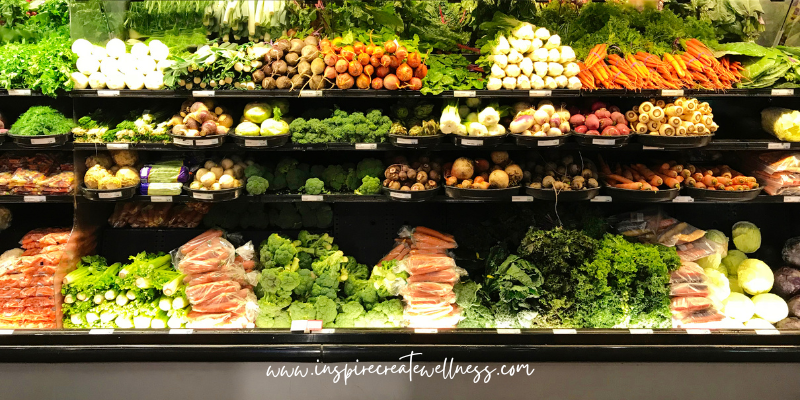
As a rule of thumb organic produce tends to be smaller in size and have more blemishes than conventional produce which gives us a slight visual difference between the two. Which made me wonder if there was any other way to visually see if there is a difference? Which led me to try this simple potato experiment!
If you “dig” around for information about potatoes you may find that conventional potatoes in the US are sprayed with an herbicide that helps preserve them, prevent eyes from sprouting, and give them a longer shelf life. Supposedly this herbicide is safe for humans to consume. Claims are that it somehow wears or washes off when you clean the potato under running water. The interesting thing is the herbicide used to stop potatoes from sprouting – CIPC – short for Chlorpropham, was banned from all European potatoes in 2020. Unfortunately, all non-organic potatoes in the US are still sprayed with this chemical as of 2024.
How do we know that the Organic Potato isn’t also sprayed with herbicide to give it a longer shelf life as well? We definitely can’t tell by looking at a potato if something has been sprayed on the skin. Other than a organic russet potato appearing a little smaller than a russet potato the skin looks virtually the same. How do we know the organic potato isn’t also sprayed with herbicide? There’s one way to find out… leave both kinds of potatoes on your counter for days, weeks, and even a month with natural light and warm air and watch to see what happens.
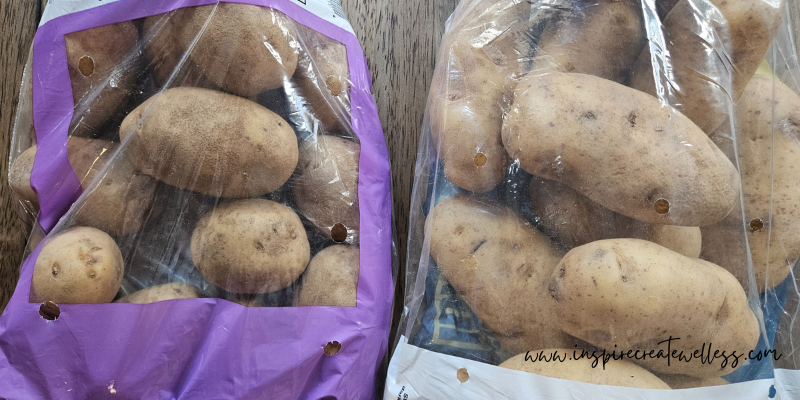
To begin this kitchen experiment I purchased 2 bags of potatoes on the same day from the same grocery store. One bag of Organic Russet Potatoes (on the left) and one bag of Russet Potatoes (on the right). You can see from the picture that the conventional farmed potatoes are quite a bit bigger and definitely more uniform in size and shape. In fact, if you look closely at the bag on the right you will notice that all the potatoes in the bag are virtually the same exact size and shape. The Organic Russet Potatoes vary more in size and are quite a bit smaller overall.
Much like we can’t see the wind only the effects of it, we can’t see the herbicide that is sprayed on the russet potato skins. We can’t smell it either. There is literally no way to see its effects until these potatoes sit on the counter for a few days. Then it quickly becomes quite evident that there is a difference!
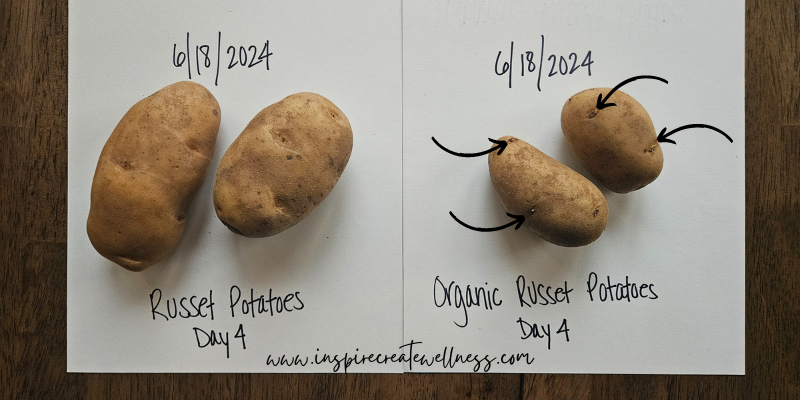
Within 4 short days of sitting on the counter the Organic Russet Potatoes began sprouting small eyes (see the arrows above). The conventional farmed russet potato remained unchanged. No sprouting or eyes appeared within the first week. It became evident in less than a week that these potatoes varied in more than just size. Clearly the organic potatoes weren’t sprayed with the same herbicide to prevent sprouting.
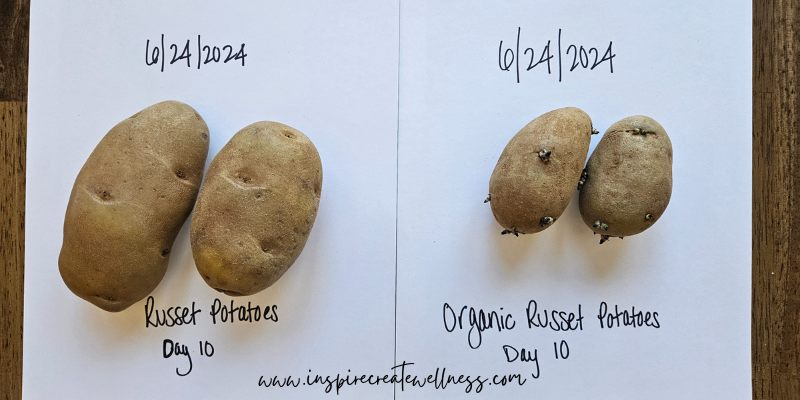
This next photo was taken 10 days after the conventional and organic russet potatoes sat on the counter. You can really start to see the difference now. What started at only 4 days has really become more visually apparent at 10 days. Look at the size of the eyes sprouting on the organic potato while the conventional russet remains exactly the same as when it was purchased!
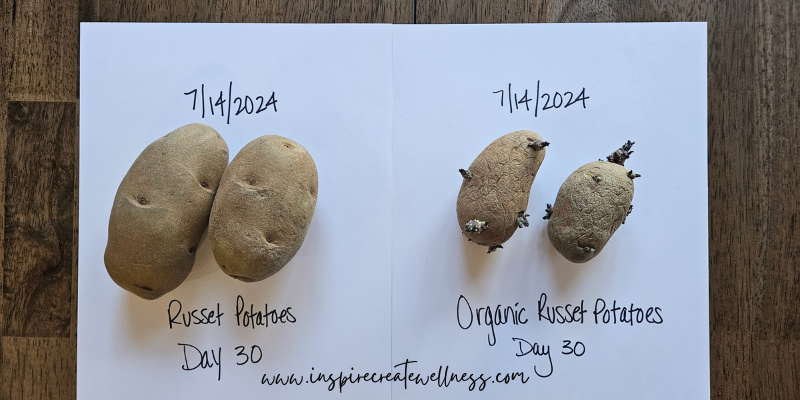
Now look at what happened after a month on the counter in natural daylight and warm air!!! The conventional russet potatoes never sprouted. In fact, they look exactly the same as 30 days prior. They remained unchanged from the original purchase date. This month long experiment produced some amazing visual results showing there is a difference in conventional potatoes vs organic potatoes. Much like we can’t see the wind, only the effects of it. We can’t see what is on our produce, however, we can see the effects!
As for me, I always prefer organic even if it means a shorter shelf life or smaller produce! I would much rather purchase produce with a shorter shelf life versus eat herbicides, pesticides, or other questionable chemicals. If you have ever wondered if there is a difference between conventional and organic potatoes give this experiment a try! You can see the results for yourself and hopefully it will inspire you to buy more organically grown produce in the future.
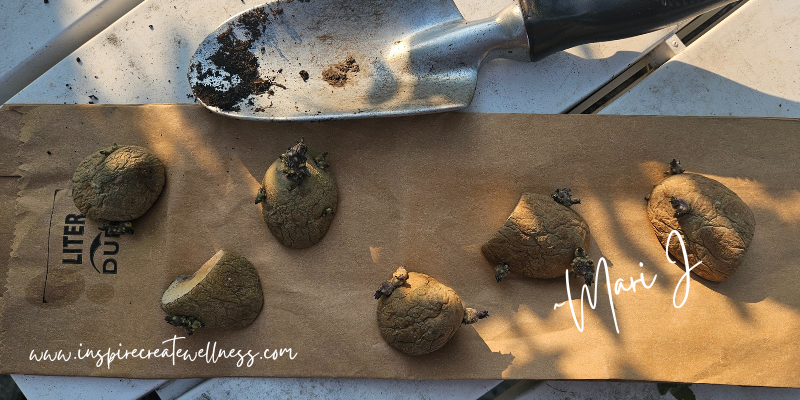
Oh…don’t worry, I didn’t waste the organic russet potatoes that sprouted! I planted them in my garden! You can too… simply cut the potato making sure not to damage the sprouted eyes. Out of the 2 sprouted organic potatoes I ended up with 6 potato pieces ready to plant. Make sure to dry these pieces out before planting. Place the cut potatoes in a brown paper sack on the counter for a few days and allow the cut sides to dry out.
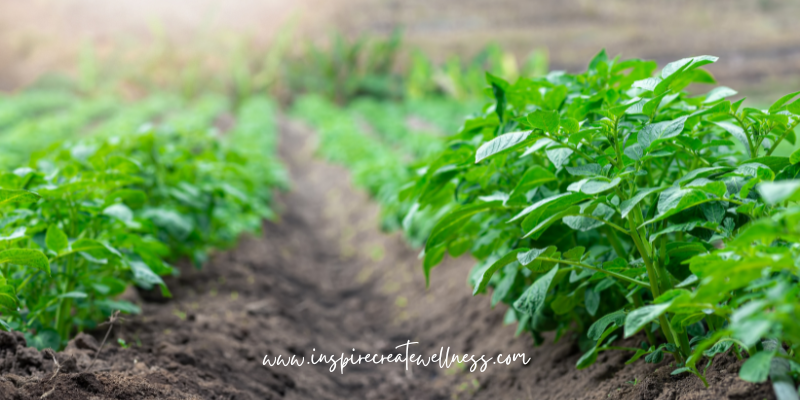
Prepare the soil by making deep rows for the potato starts. Then plant the prepared potatoes every 12 inches with the eyes facing up. Cover potatoes with a tall mound of dirt and continue to add more soil throughout the growing season. The photo above is a great visual of the built up soil around the base of the potato plant.
Buying Organic does matter. Although there is still mixed information out there on whether or not organic produce has more nutrients, we do know that they have less chemicals and that should be enough for us to choose organic! If anything, organic foods are safer to consume and have less toxicity. They are grown with safer farming practices and more focus on the quality of the soil.
Look for regenerative farming labels on your foods as well. This farming practice works with nature on improving the quality of the soil and producing nutrient dense foods without pesticides. Regenerative farms practice crop rotation and bring in beneficial plants and nutrients that help feed the soil. They don’t burn, till, or use pesticides in their fields. In a nutshell, they feed the soil with diversity and focus on having good soil for their crops.
In summary, my potato experiment is by no means intended as a scientific experiment. It’s simply a fun visual to show there is a difference between a conventionally grown russet potato and an organically grown one. Merely bringing to light that the organic potato doesn’t have herbicide on the outside skin. Give it a try for yourself!
Never be afraid to experiment in your kitchen. This is a great summer experiment and a fantastic way to educate your family on the difference between non-organic and organic produce. Visuals are always a good educator!
About the Author
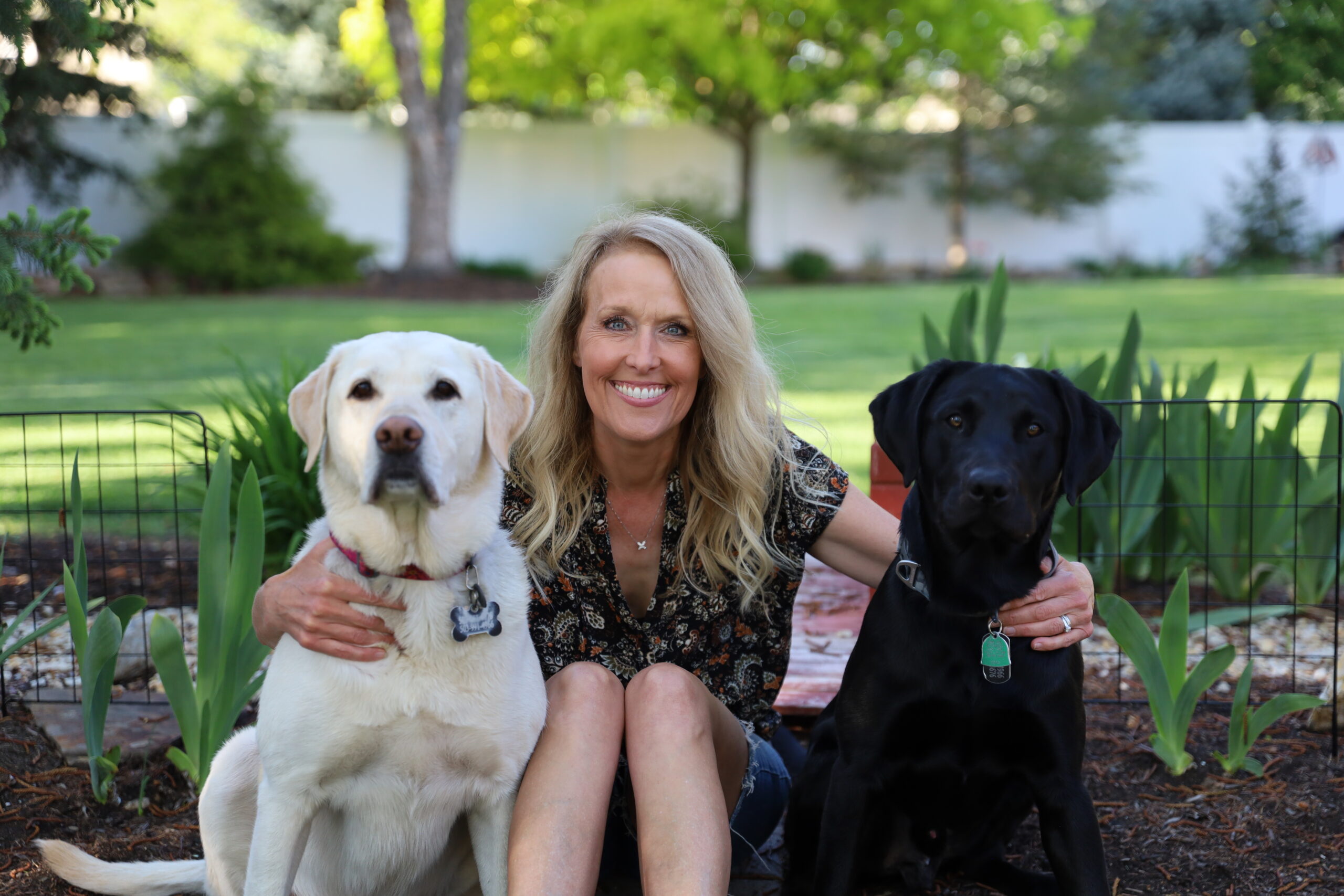
I love animals, gardening, and being creative in the kitchen. I can’t waste food and rarely follow the recipe! As a IIN Certified Integrative Nutrition Health Coach I can help you get from where you are to where you want to be. Join me on my journey!

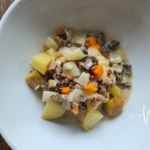
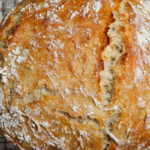

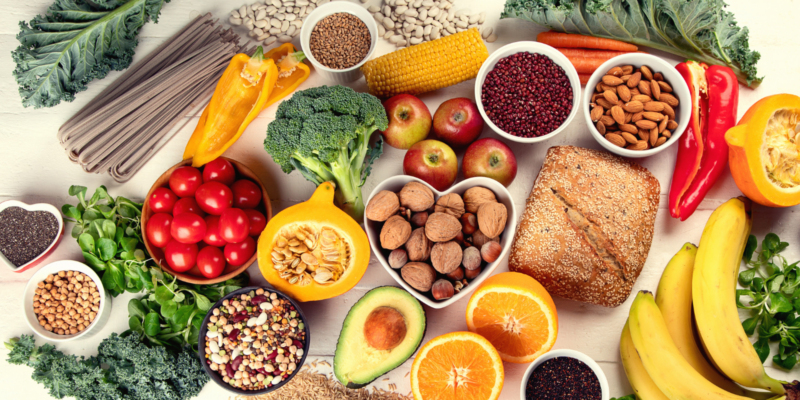


Leave a Reply